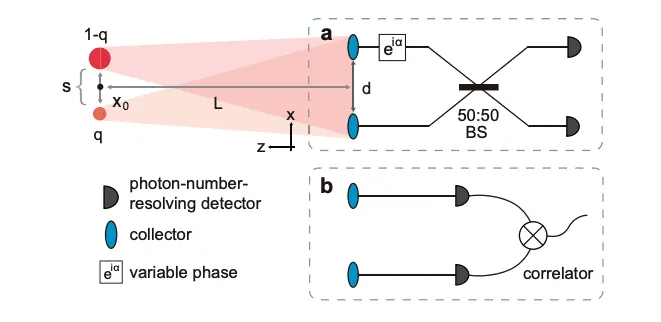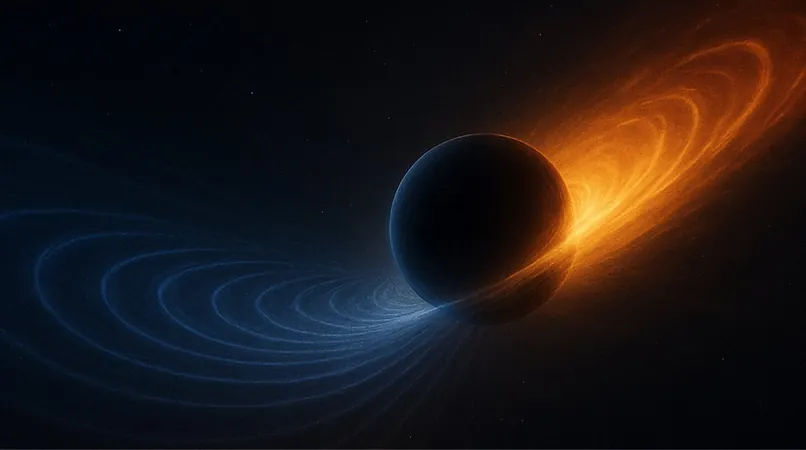
Astronomy Breakthrough: New Techniques for Revealing Hidden Celestial Wonders!
2025-09-17
Author: Nur
Unlocking the Secrets of the Stars
Astronomers have long faced the daunting challenge of observing faint celestial objects that lurk near the dazzling glare of brighter stars. But a groundbreaking study from a team at Nanjing University is set to change everything! Chenyu Hu, Ben Wang, Jiandong Zhang, and their colleagues have unveiled innovative methods that push the boundaries of stellar interferometry, allowing us to see further into the cosmos like never before.
Revolutionary Methods for Measuring Stellar Separations
Their research introduces a game-changing approach using advanced estimation theory. By cleverly utilizing superresolution techniques, the scientists reveal that the separation between stars of unequal brightness can be measured with astounding accuracy. They explored two key methods in stellar interferometry: nulling interferometry, which has potential applications in exoplanet detection, and a technique called intensity interferometry.
While nulling interferometry emerges as the frontrunner for precise separation measurements, intensity interferometry shows promise under real-world conditions, where light interference is more complex than ideal scenarios suggest.
Advanced Techniques for Enhanced Observations
The researchers developed a sophisticated modified expectation-maximization algorithm, incorporating a clever weighting scheme. This algorithm effectively minimizes bias from brighter stars, allowing for the detection of dimmer celestial partners. Their results are impressive: achieving resolutions capable of discerning binary stars with surprisingly close separations as tiny as two wavelengths.
The enhancements don’t stop there! Their method boasts a remarkable 30% improvement in clarity for companions with extreme flux ratios of 1:100 and an astonishing 50% improvement for ratios of 1:1000.
Pushing the Limits of Stellar Interferometry
This study doesn't just redefine resolution limits in stellar interferometry; it sets a standard for achievable precision. By applying quantum estimation theory, the team determined a constant ultimate limit for estimating star separations, showcasing the potential of amplitude interferometry to surpass traditional diffraction limits.
The findings signal exciting possibilities for astronomers, particularly with ultra-long baselines across multiple telescopes, making intensity interferometry a credible option for tackling real-world challenges in space observations.
A Future Full of Cosmic Discoveries
This groundbreaking research opens the door to a future where astronomers can detect and study faint objects and exoplanets in proximity to bright stars. There's much more to explore, and as techniques evolve, who knows what hidden wonders await us in the night sky? Prepare for a cosmic revolution in our understanding of the universe!






 Brasil (PT)
Brasil (PT)
 Canada (EN)
Canada (EN)
 Chile (ES)
Chile (ES)
 Česko (CS)
Česko (CS)
 대한민국 (KO)
대한민국 (KO)
 España (ES)
España (ES)
 France (FR)
France (FR)
 Hong Kong (EN)
Hong Kong (EN)
 Italia (IT)
Italia (IT)
 日本 (JA)
日本 (JA)
 Magyarország (HU)
Magyarország (HU)
 Norge (NO)
Norge (NO)
 Polska (PL)
Polska (PL)
 Schweiz (DE)
Schweiz (DE)
 Singapore (EN)
Singapore (EN)
 Sverige (SV)
Sverige (SV)
 Suomi (FI)
Suomi (FI)
 Türkiye (TR)
Türkiye (TR)
 الإمارات العربية المتحدة (AR)
الإمارات العربية المتحدة (AR)